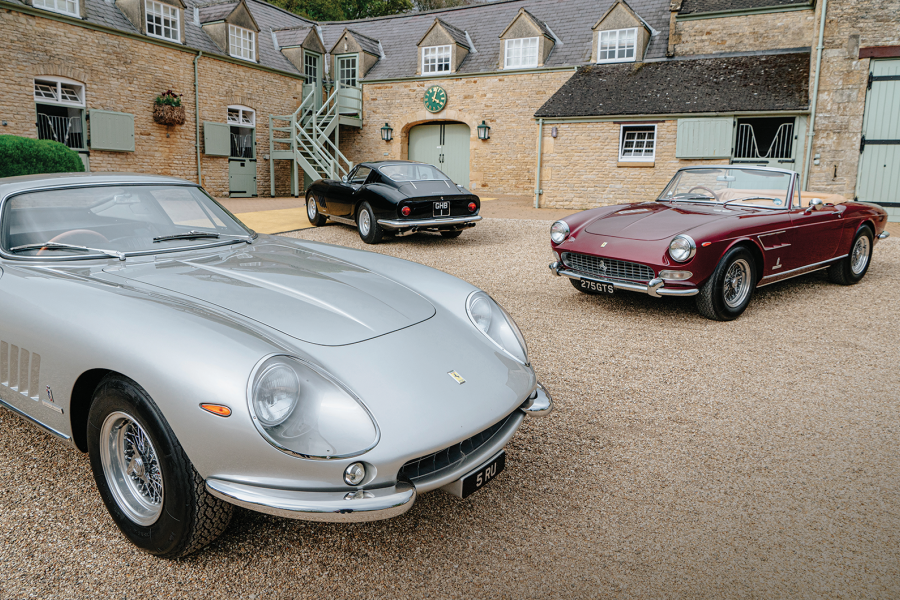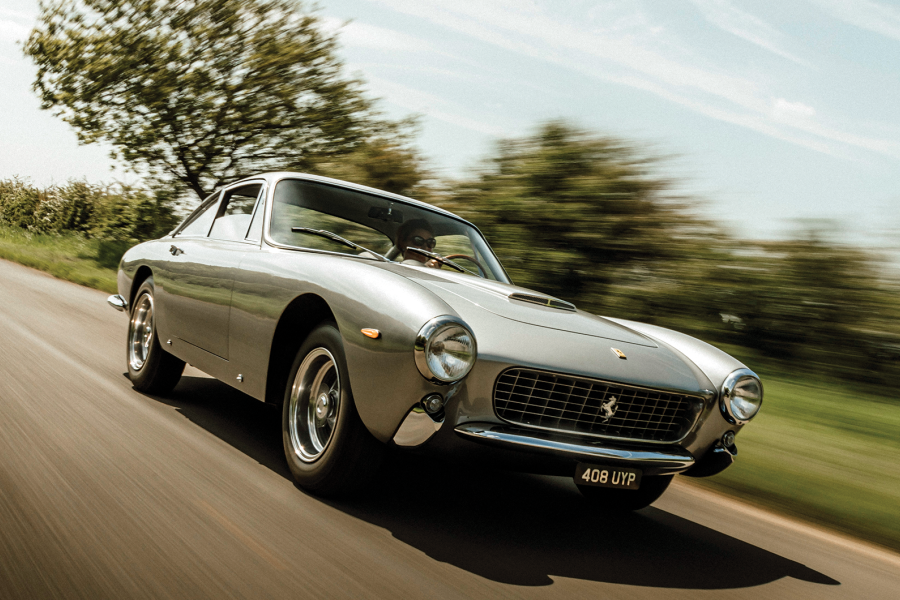“The headlamps aren’t great and it mists up in the rain. And unless it’s the middle of winter, you’ll be calling for help if the air-con stops working. It gets so hot in there. I put it away for a couple of months every winter and I think that maybe I should sell it. Then I get it out again in the spring and forget all about that.”
The F40 is a far greater machine than bare statistics would suggest
Thirty years since the F40’s launch, and 25 since production stopped, its legend has continued to grow. “It was really a statement for Enzo and for the anniversary,” concludes Nichols. “The engineers approached it with real passion and a purity of mission.”
“It was a lightweight car with a lot of power and that’s what makes it fun to drive,” says Benuzzi. “And the work we did with Weber on the drivability really made a huge difference. Of course, the handling was also very good. So, all in all, a very good package! I think that, if we’d been able to adopt a steering and brake servo, the F40 would still be a force to be reckoned with among supercars today.”
The Ferrari’s headline figures – 478bhp, 0-100mph in 8.3 seconds, 201mph – have long since been eclipsed by later generations of supercar. But this is not a machine to measure by statistics. They give no impression of how it feels, how visceral the driving experience is, how it oozes malevolent charisma from every pore. In returning to its roots and placing pure emotion at the core of the F40, Ferrari created the greatest supercar of all time.
Images: James Mann, Tony Baker, Archivo Pininfarina & M Cavazzuti, Ferrari Spa; thanks to Jason Harris and Joanne Marshall at Ferrari, Mark Hawkins, Peter Bullard
This was first in our January 2018 magazine; all information was correct at the date of original publication
FACTFILE
- Sold/number built 1987-’92/1315
- Construction tubular steel chassis with bonded composite tub, Kevlar body panels
- Engine all-alloy, dohc-per-bank 2936cc 90º V8, twin IHI turbochargers, Weber-Marelli electronic fuel injection
- Transmission five-speed manual transaxle, driving rear wheels
- Suspension independent, by wishbones, coil springs and telescopics; anti-roll bar f/r
- Brakes ventilated discs
- Steering rack and pinion
- Length 14ft 61/2 in (4430mm)
- Width 6ft 6in (1981mm)
- Height 3ft 8in (1117mm)
- Wheelbase 8ft 1/2 in (2450mm)
- Weight 1100kg (2425lb)
- 0-60mph 4.2 secs
- Top speed 201mph
- Mpg 10
- Price new £160,000
- Price now £600-800,000
The evolution of the hypercar
Ferrari 365GT4 BB and 288GTO were predecessors, F50 came later
365GT4 BB (1973-’76)
Maranello’s first true supercar placed a 4391cc flat-12 (in reality, a flattened vee rather than an actual boxer) within an alluring Fioravanti body that combined aluminium, steel and reinforced resin. In 1976, it morphed into the 4943cc 512BB – a car that was lusted after by Gilles Villeneuve. High praise indeed.
- Power 380bhp
- 0-60mph 6.5 secs
- Top speed 171mph
288GTO (1984-’86)
Built in a 272-strong run that was intended to allow the model to compete in Group B, the GTO had to settle for being ‘just’ a road car after the demise of that category. The twin-turbo V8 provided the foundations for the F40, and it’s arguably the best-looking of Maranello’s supercars.
- Power 400bhp
- 0-60mph 4.9 secs
- Top speed 189mph
F50 (1995-’97)
By the time that the F50 came along, the world had changed thanks to the introduction of the McLaren F1 – the hypercar had arrived. Despite Ferrari working hard to play up the links to its Formula One cars via the V12 and carbonfibre monocoque, the F50 was not warmly received, but values are now strong.
- Power 513bhp
- 0-60mph 3.7 secs
- Top speed 202mph
Enzo and LaFerrari are the marque’s most recent supercars
Enzo (2002-’05)
Both on-track and off, Ferrari was in a rich vein of form during the early 21st century. The Enzo featured carbon-ceramic brakes, paddle-shift transmission, clever underbody aerodynamics and a storming V12, while its electronic whizzkiddery enabled mere mortals to access its huge performance.
- Power 650bhp
- 0-60mph 3.5 secs
- Top speed 217mph
LaFerrari (2013-’17)
Look past the pretentious name and you’ll discover that ‘The Ferrari’ borrows from F1 by combining an internal-combustion engine (in this case, a 6.3-litre V12) with hybrid KERS technology. The latter adds 160bhp to an already healthy 790bhp. By no means beautiful, but searingly fast.
- Power 950bhp
- 0-60mph 2.4 secs
- Top speed 217mph
Market view
F40s generally now sell for £600-700,000
Ferrari launched the F40 at the height of the speculators’ market of the 1980s, and intended to make only 400 of them. Once it had realised it was onto a good thing, that figure crept up to more than 1300. They were all red – although some have since been resprayed a different colour – and all apart from two cars ordered by the Sultan of Brunei were left-hookers.
“F40s were at £300-350,000 for quite a few years,” says Mark Hawkins of Ferrari specialist Rardley Motors, “then three or four years ago they jumped to £500-600,000. You do hear of cars going for £1million, but those tend to be 2000-mile, one-owner examples that come out of the woodwork. If you eliminate extremes such as that, most cars are now £600-700,000.”
There are three basic types of roadgoing F40 – those with neither catalytic converters nor adjustable suspension, those with cats and non-adjustable suspension, and those with cats and adjustable suspension. Each variant has its supporters, Hawkins reports, with other factors being more important.
“Mileage plays its part,” he explains. “Most of the ones that we’ve sold have been between 6000 and 50,000 miles. But it’s better to have a 50,000-mile car with an immaculate service record than it is to have a 25,000-miler with sketchy history. Originality, condition and a verifiable past are all vital.”
READ MORE
Buyer’s guide: Ferrari Testarossa
The best barn-find Ferraris ever
Is there such a thing as a cheap Ferrari?
Best of the best: which is the greatest Ferrari racer?
James Page
James Page is a regular contributor to – and former Editor of – Classic & Sports Car






















